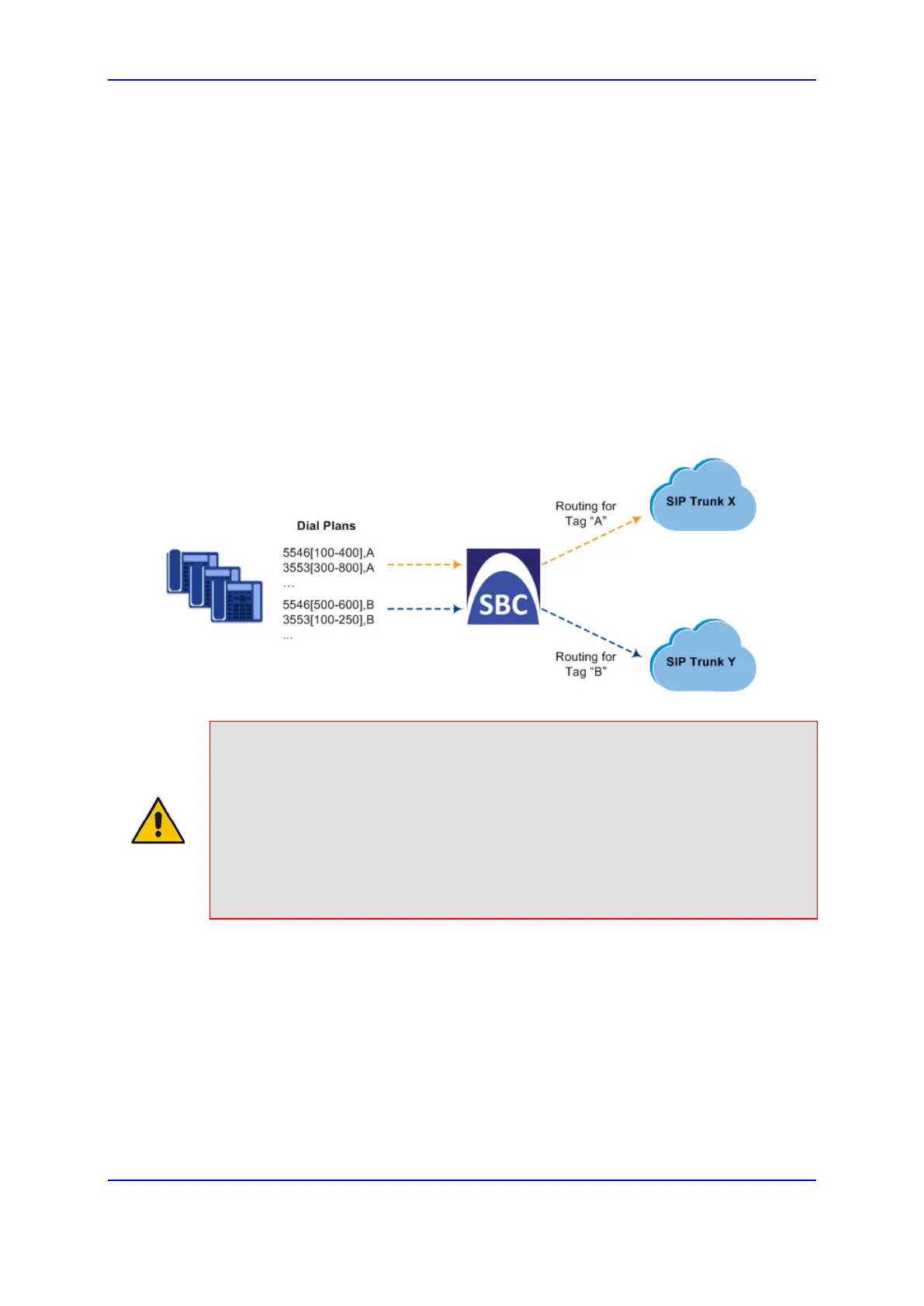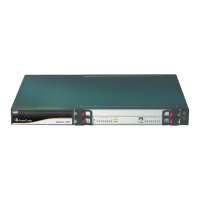Version 7.0 633 Mediant 3000
User's Manual 35. Configuring Dial Plans
35 Configuring Dial Plans
Dial Plans let you categorize users (source and/or destination) according to source and/or
destination numbers of the incoming SIP dialog-initiating requests. The device categorizes
users by searching in the Dial Plan for rules that match these numbers according to prefix,
suffix, and/or whole number. The categorization result in the Dial Plan is a tag
corresponding to the matched rules. You can then use the tags to represent these users
(source and/or destination users) as matching characteristics (source and/or destination
tags) for the following:
IP-to-IP Routing rules (see 'Using Dial Plan Tags for IP-to-IP Routing' on page 688)
IP-to-IP Outbound Manipulation rules ('Using Dial Plan Tags for Outbound
Manipulation' on page
642)
The figure below shows a conceptual example of routing based on tags, where users
categorized as tag "A" are routed to SIP Trunk "X" and those categorized as tag "B" are
routed to SIP Trunk "Y":
Figure 35-1: Routing based on Tags
Note:
• User categorization by Dial Plan is done only after the device's Classification and
Inbound Manipulation processes, and before the routing process.
• Once the device successfully categorizes an incoming call by Dial Plan, it not only
uses the resultant tag in the immediate routing or manipulation process, but also
in subsequent routing and manipulation processes that may occur, for example,
due to alternative routing or local handling of call transfer and call forwarding (SIP
3xx\REFER).
• For manipulation, tags are applicable only to outbound manipulation.
You can assign a Dial Plan to an IP Group or SRD. After Classification and Inbound
Manipulation, the device checks if a Dial Plan is associated with the incoming call. It first
checks the source IP Group and if no Dial Plan is assigned, it checks the SRD. If a Dial
Plan is assigned to the IP Group or SRD, the device first searches the Dial Plan for a dial
plan rule that matches the source number and then it searches the Dial Plan for a rule that
matches the destination number. If matching dial plan rules are found, the tags configured
for these rules are used in the routing and/or manipulation processes as source and/or
destination tags.
The Dial Plan itself is a set of dial plan rules having the following attributes:
Prefix: The prefix is matched against the source and/or destination number of the
incoming SIP dialog-initiating request.

